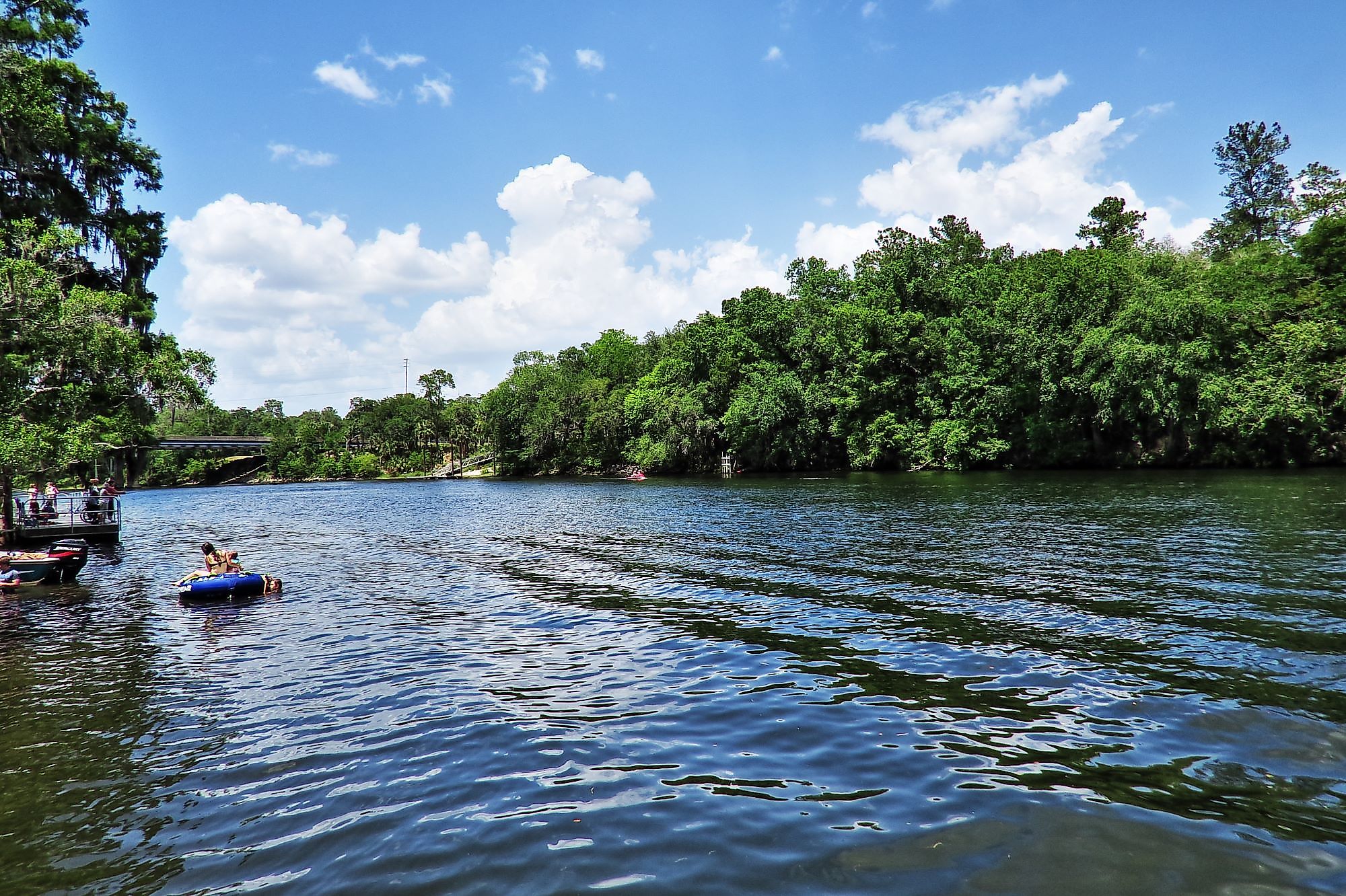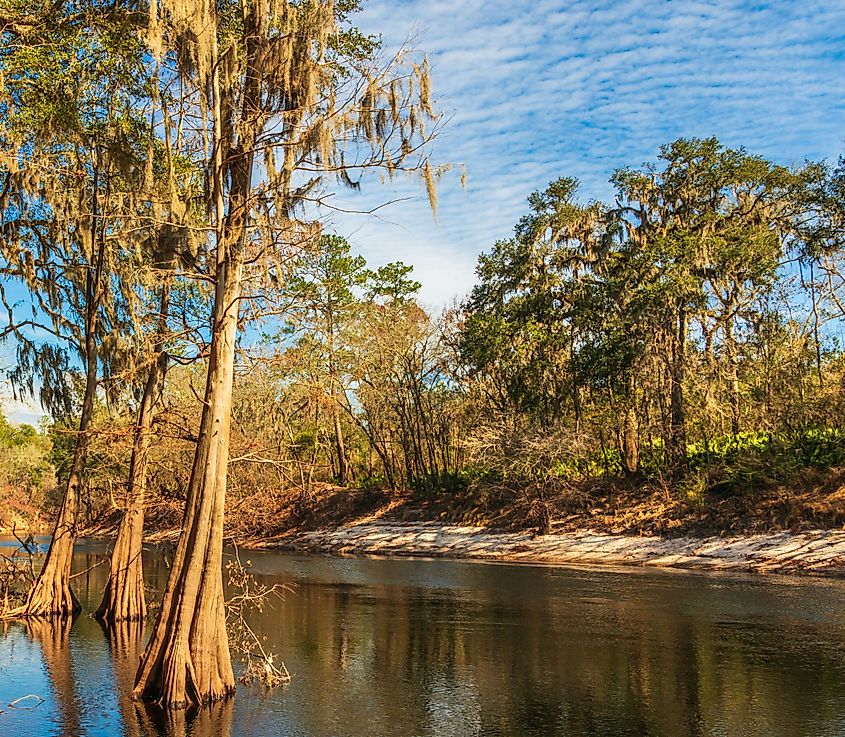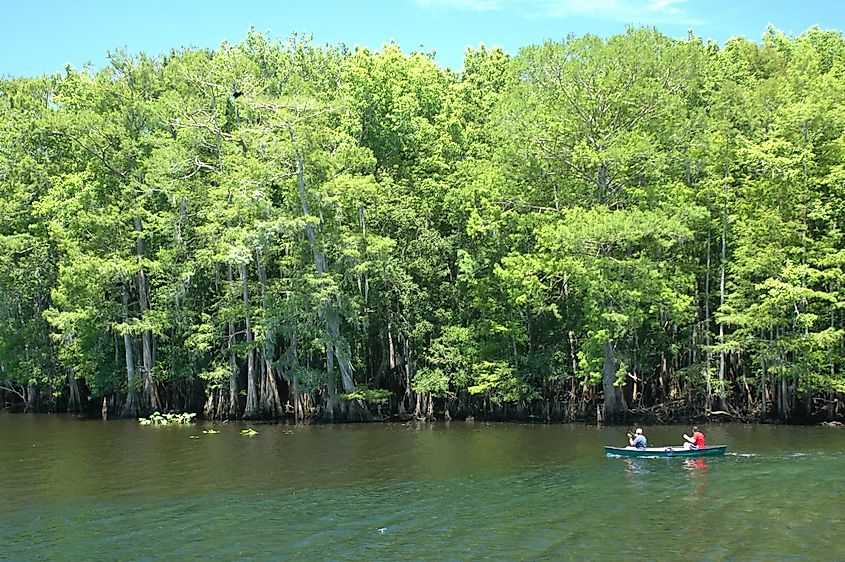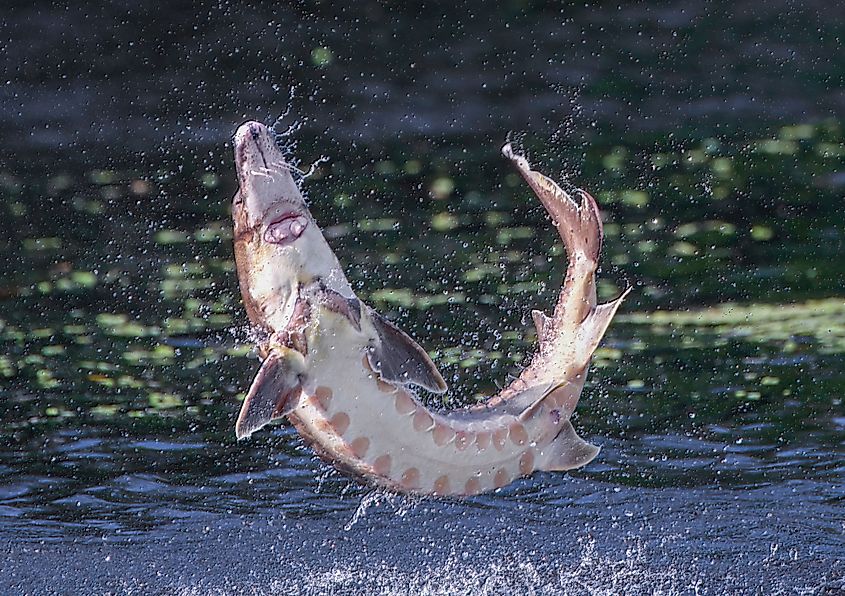
Suwannee River
The Suwannee River is a 396km long river that flows from Georgia to the Gulf of Mexico in Florida, United States. The Suwannee River is a wild blackwater river, meaning that it moves through the wetlands and swamps, which causes its waters to turn acidic and darkly stained. This feature, in addition to the extreme variation in water flow, limits the fish population especially in the Georgia portion of the Suwannee River basin. Moreover, the change in watercolor can be seen at the confluence of the Suwannee River with the Withlacoochee River. The Suwannee River also includes the Suwannee Straits, an ancient geologic feature of Florida that was present during the Paleogene period. The 32 kilometers of the Suwannee River estuary falls within the Lower Suwannee National Wildlife Refuge (LSNWR), a US National Wildlife Refuge System on the western coast of Florida. The nutrient influx from the Suwannee River, along with tidal creeks and offshore islands, plays an important role in supporting a unique wildlife habitat for various species that take refuge in the system. Half of the Suwannee River basin’s area is in Georgia, and it drains an area of about 28,542 sq. km including all the twenty Georgia counties.
Course Of The Suwannee River

The Suwannee River begins from the Okefenokee Swamp in the city of Fargo, Georgia. The river then flows in the southwest direction through the limestone layers into the Florida Panhandle and reaches the whitewater rapid. After flowing through the rapid, the Suwannee River turns in the western direction and reaches the town of White Springs, where it meets with the Withlacoochee River and the Alapaha River. The meeting point of these three rivers forms the southern boundary of Florida’s Hamilton County. After that, the river shifts southward close to the towns of Ellaville and Luraville and joins the Santa Fe River in the southern part of the town of Branford. Finally, the Suwannee River drains into the Gulf of Mexico on the outskirts of the unincorporated community of Suwannee.
History
The Suwannee River area was inhabited by people of the Weedon Island culture, a group of related archaeological cultures that existed during the Late Woodland period of the North American southeast. Around the year 900, the Suwannee River Valley culture developed as a derivative local culture. The Timucua-speaking Yustaga tribes lived along the western side of the river, while the Northern Utina tribes lived along the river’s eastern side. It is generally believed that the name of the Suwannee River had been derived from the Creek word “sawani” which meant “echo”.
Recreational Facilties In The Suwannee River

Stretching more than 274 kilometers, the Suwannee River Wilderness Trail is a web of connected Florida State Parks and wilderness areas that attract visitors every year. Moreover, The Lower Suwannee National Wildlife Refuge offers several recreational activities, attracting tourists to the scenic view of the basin and surrounding wildlife. Some of the main recreational activities that are offered by the Wildlife Refuge for its visitors include fishing, hunting, bird watching, wildlife photography, wildlife drives, foot trails, etc.
Wildlife In The Suwannee River

The vast salt marshes close to the Suwannee River provide a home to many creatures that inhabit the area all year round. These animals include bobcats, white-tailed deer, raccoons, river otter, etc. The Wildlife Refuge is also home to several endangered species including the Florida salt marsh vole, Gulf sturgeon, Eastern indigo snake, gopher tortoise, and wood stork. The refuge also supports numerous aquatic species such as the West Indian manatee, bottlenose dolphin and a variety of freshwater fish.











